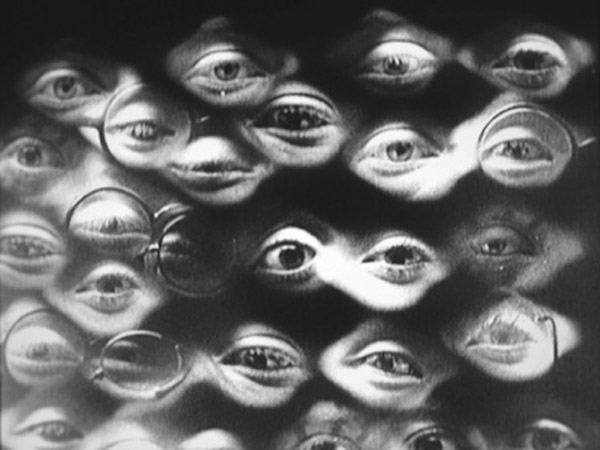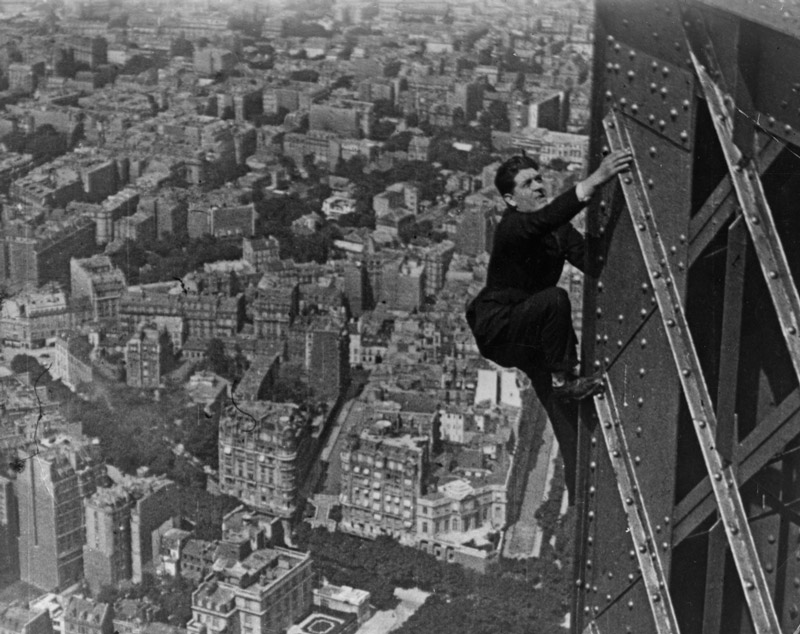 Το Rien que les heures (Mόνο οι ώρες) είναι ένα πειραματικό φιλμ του βωβού κινηματοιγράφου ,γυρισμένο , το 1926, από τον Βραζιλιάνο σκηνοθέτη Alberto Cavalcanti , που δείχνει, με τρόπο εντυπωσιακό και σε 45 μόνο λεπτά, τη ζωή του Παρισιού μέσα σε μια μέρα.
Το Rien que les heures (Mόνο οι ώρες) είναι ένα πειραματικό φιλμ του βωβού κινηματοιγράφου ,γυρισμένο , το 1926, από τον Βραζιλιάνο σκηνοθέτη Alberto Cavalcanti , που δείχνει, με τρόπο εντυπωσιακό και σε 45 μόνο λεπτά, τη ζωή του Παρισιού μέσα σε μια μέρα.Read more:
—Jack C. Ellis
Rien Que les Heures - Film (Movie) Plot and Review
(Only the Hours)
France, 1926
Director: Alberto Cavalcanti
Production: Néofilm (Paris); black and white, 35mm, silent; running time: 45 minutes. Released 1926. Filmed in Paris.
Photography: Jimmy Rogers; editor: Alberto Cavalcanti; art director: M. Mirovitch.
Books:
Klaue, Wolfgang, and others, Cavalcanti , Berlin, 1962.Barsam, Richard, Nonfiction Film: A Critical History , New York, 1973.
Barnouw, Erik, Documentary: A History of the Non-Fiction Film , New York, 1974.
Ellis, Jack C., The Documentary Idea , Englewood Cliffs, New Jersey, 1989.
Articles:
Grierson, John, "Documentary," in Cinema Quarterly (London), Winter 1932."Cavalcanti: His Film Works," in Quarterly of Film, Radio, and Television (Berkeley), Summer 1955.
Rodriquez Monegal, Emir, "Albert Cavalcanti," in Quarterly of Film, Radio, and Televisions (Berkeley), Summer 1955.
Minish, Geoffrey, "Cavalcanti in Paris," in Sight and Sound (London), Summer 1970.
Beylie, Claude, and others, "Alberto Cavalcanti," in Ecran (Paris), November 1974.
Rodriguez Monegal, Emil, "Alberto Cavalcanti," in Nonfiction Film Theory and Criticism , edited by Richard Barsam, New York, 1976.
Jacobs, Lewis, "Two Aspects of the City: Cavalcanti and Ruttmann," in The Documentary Tradition , New York, 1979.
Buache, F., in Travelling , no. 56/57, Spring 1980.
Nave, B., "Alberto Cavalcanti: portrait d'un explorateur du cinema," in Jeune Cinéma (Paris), no. 195, June/July 1989.
Cosandey, R., "Alberto Cavalcanti," in Plateau , vol. 10, no. 2, 1989.
Rodrigues, A., and A. Marchand, "Alberto Cavalcanti: An 'Extraordinary Ordinary Man,"' in Griffithiana , no. 60/61, October 1997.
* * *
Rien que les heures was the first of the "city symphony" films. It was followed by Berlin: Die Sinfonie der Grossstadt (Berlin: Symphony of a Great City) (1927, Walter Ruttmann), Chelovek s kinoapparatom (The Man with a Movie Camera) (Moscow, 1929, Dziga Vertov), and Regen (Rain) (Amsterdam, 1929, Joris Ivens). This genre grew out of the interest of 1920s avant-garde filmmakers in the interrelationship between space and time. It is related to the method of the earlier French impressionist painters in their attempts to capture quick views and concentration on surfaces and light. The genre is also related to novels of the time which offer a cross-section of city life during a limited period, e.g. Joyce's Ulysses (1922) and Dos Passos's Manhattan Transfer (1925). The city symphony films were one of the strands that led into the documentary; Cavalcanti, Ruttmann, Vertov, and Ivens all subsequently became identified with documentaries. Paul Rotha, of British documentary, called these filmmakers "continental realists." Cavalcanti moved from the avantgarde of France in the 1920s to the documentary of Britain in the 1930s.
Rien que les heures is a curious and fascinating mixture of the aesthetic and the social. It deals with Paris from pre-dawn to well into the following night—roughly 24 hours. The opening titles promise that we will not be looking at the elegant life but rather at that of the lower classes. Thus the social viewpoint is established. A philosophical thesis about time and space is also introduced and returned to. At the end we are asked, after we have seen what the filmmaker can show us of Paris, to consider Paris in relation to Peking. The titles assert that we can fix a point in space, immobilize a moment in time, but that space and time both escape our possession. Life is ongoing and interrelated. Without their monuments you can't tell cities apart.
Rien que les heures
Still, Cavalcanti's viewpoint about all of this seems to be one of detachment: "c'est la vie," he seems to be saying. Though some concern with social matters is evident, the considerable number and variety of highly stylized special effects—wipes, multiple exposures, fast motion, spinning images, split screen, freeze frames—seem to confirm that Calvalcanti's greatest interest was in the artistic experimentation.



Δεν υπάρχουν σχόλια:
Δημοσίευση σχολίου